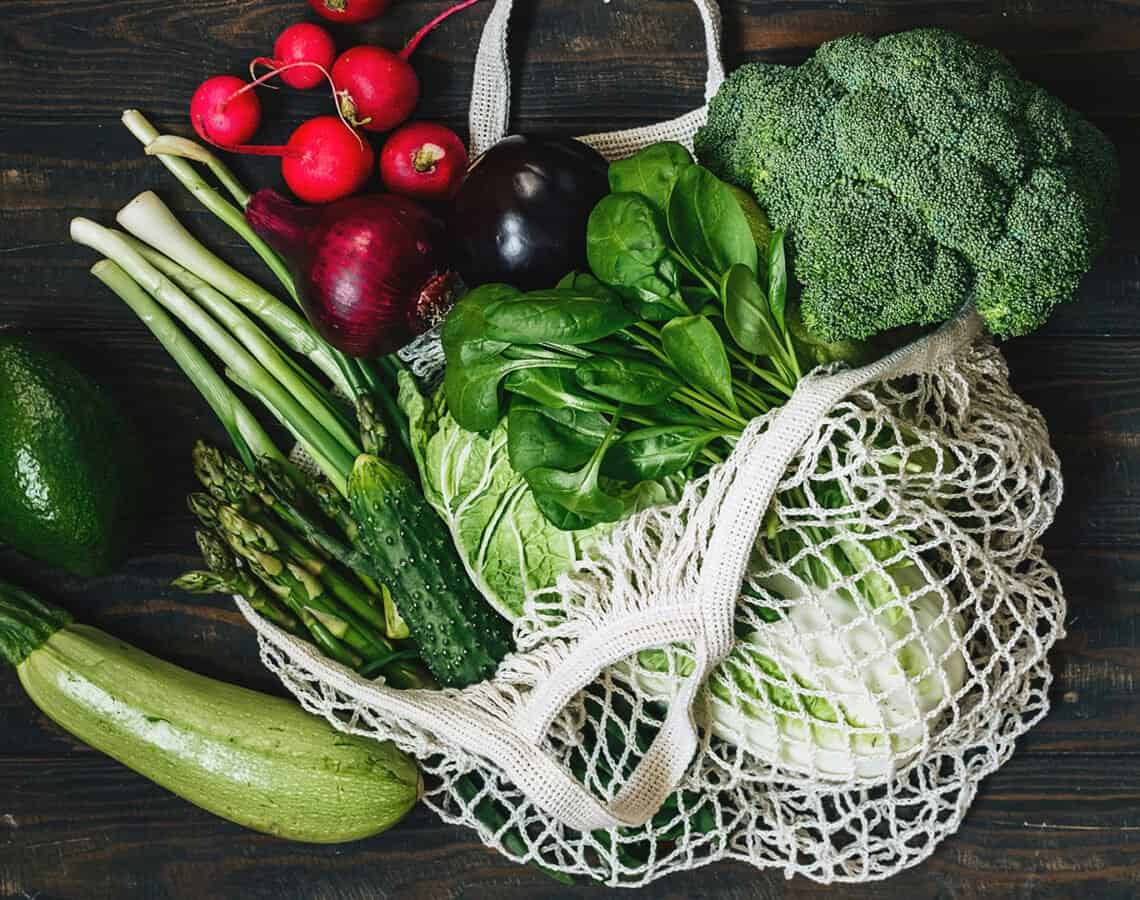Common veg mistakes: Tips to introduce new menu items

Our memories of vegetables as a child, or our preferences for the look, taste, smell or texture of veg, can influence what we eat as adults, and what we avoid1.
The problem with this, is adults need a variety of vegetables to keep our bodies healthy and fighting fit. Each vegetable has its own unique mix of nutrients, that support disease prevention and promotes a healthy weight2,3. Vegetables are a great source of dietary fibre that is critical for helping us stay full and achieve a healthy gut4.
In this blog, we’ll give you the lowdown on how to increase the vegetable diversity in your diet and explore new veg.

Common veg mistakes
There are a few common mistakes when it comes to picking, storing or cooking vegetables that can impact both their taste and nutritional value.
- Overcooking is a common crime against vegetables.
Common culprits include broccoli, cauliflower, Brussels sprouts, and cabbage. They can taste bitter and smell of sulphur when overcooked. When it comes to trying a new veg, it is important to know the best way to cook it to get the best flavour and nutritional value out of it. For great cooking tips see the healthy food guide’s cooking tips to unlock vegetable goodness.
- If you aren’t storing your vegetables right, then chances are they will go limp and have a shortened shelf life.
Not so great when trying to enjoy a new veg, plus this means food and money are wasted. Check out Sustainability VIC’s tips for correct veg storage.
- Using vegetables that are not ripe or overripe can really affect the taste and texture.
While overripe veg might be slimy, limp and bitter, veg that is under ripe may taste bland or chalky and be hard to bite into. Check out the ABC’s tips for picking vegetables at the supermarket for more.
Start with the familiar
There’s no need to go straight for the unique and less common vegetables when trying something new. Begin with veg you already like. If you’re a fan of carrots, why not give sweet potatoes or butternut pumpkin a go? They’re great options with a similar sweetness that’ll make the transition easier.
You could also consider incorporating new vegetables that can blend nicely with your favourite dishes. Sprinkle some diced capsicum into your spaghetti sauce or toss a handful of spinach into your go-to brekkie omelette. Some great but more subtlety flavoured vegetables that suit this include:
- Carrots
- Zucchini
- Eggplant
- Green beans
- Peas, and
- Potato

Try different cooking methods
When trying a new veg, look up the best way to cook it, being careful not to overcook it! For example, a commonly misunderstood veg is the Brussels sprout, often overcooked making it taste bitter. One of the best ways to cook Brussels sprouts is to roast them with a little olive oil for around 30 minutes. They will come out tasting nutty, with a soft middle and crunchy outside.
Switch things up with various cooking techniques, like cooking veggies on the barbie, giving them a sauté, or even trying them raw with a dip. Experimentation in the kitchen can help you get a new appreciation for the taste of veg.
Keeping within your budget
With the cost of living going up, keeping the weekly grocery shop within budget is getting trickier. When trying to include new vegetables in your diet you can save money by following these 3 tips:
- Pick seasonal vegetables, this means they will be more affordable and at their peak nutritionally.
- Don’t discount ugly, imperfect or odd vegetables, these are often cheaper and also help to reduce food waste at the farm gate.
- Frozen, canned or dried vegetables are great options too, don’t believe the hype – canned and frozen vegetables are picked at their peak and offer great nutritional benefits, not to mention can be much more affordable. A huge benefit with frozen, canned or dried legumes (i.e., spilt peas, lentils or beans) is that you can have them ready to add into a meal, plus they create minimal food waste, meaning they are great value for money.
Tip: When picking canned vegetables look for salt-reduced or no-added salt options, and rinse thoroughly before use.
Share the love, share the veg
You don’t have to try new vegetables on your own. Try sharing the experience with friends or your family. How about hosting a “veggie tasting” dinner where everyone brings a dish featuring a new vegetable?
Where to next?
With these pointers you’ll be tucking into a world of fresh flavours and feeling all the better for it.
If you are interested in learning more about reducing food waste, check out our blog on how to make the most of vegetables.
For great vegetable focussed recipe ideas, tips, and veggie-cation blogs full of inspiration, head to boostyourhealthy.com.au
For tips on getting kids to explore vegetables check out:
- https://hw.qld.gov.au/blog/building-healthy-habits-with-kids/
- https://growinggoodhabits.hw.qld.gov.au/children/food-for-growing-kids/serve-up-more-fruit-and-vegies/
- Our amazing free, play-centric wellbeing program PodSquad for kids, https://www.playpodsquad.com.au/
References
- Hill CR, Blekkenhorst LC, Radavelli-Bagatini S, Sim M, Woodman RJ, Devine A, Shaw JE, Hodgson JM, Daly RM, Lewis JR. Fruit and Vegetable Knowledge and Intake within an Australian Population: The AusDiab Study. Nutrients. 2020; 12(12):3628. https://doi.org/10.3390/nu12123628
- Hendrie, G., Noakes, M. (2017). Fruit, Vegetables and Diet Score.
- Eat for Health: Vegetables and Legumes / Beans. National Health and Medical Research Council 2019.
- Dietitians Australia. Fibres for your gut: sorting through the roughage, 2022.


